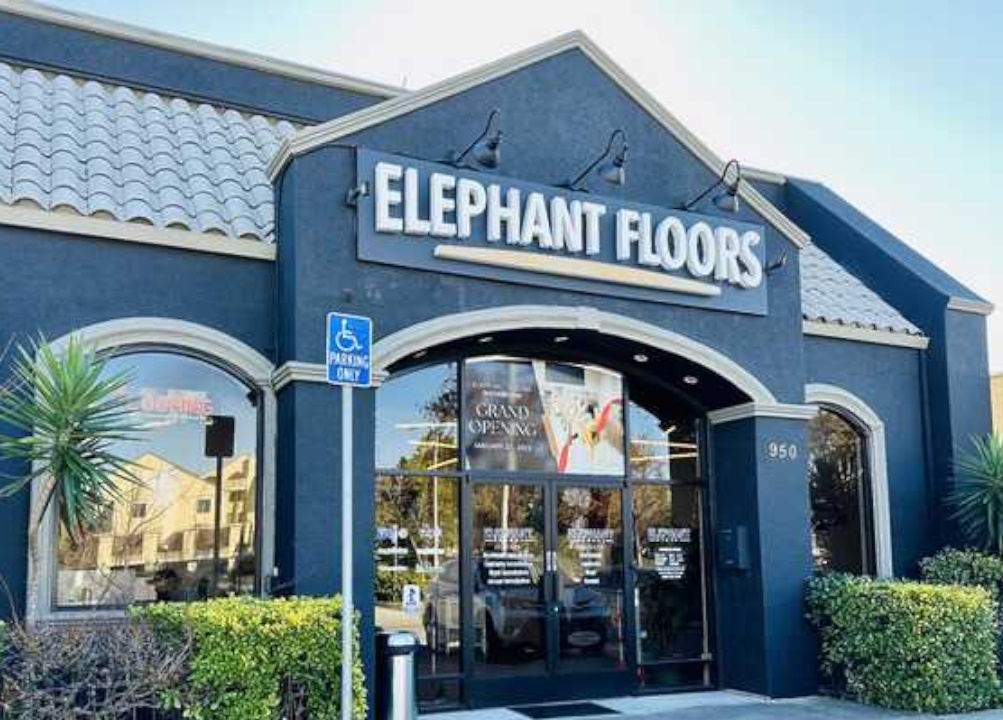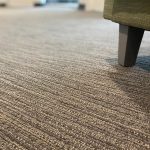When selecting a floor for your home, there are so many options to consider. From hardwood to tile, laminate to carpet, deciding what option is best for your space can be challenging. However, if you’re looking for an uncomplicated, cost-effective, and versatile option, you should consider vinyl flooring.
Vinyl flooring is quickly becoming one of the most popular flooring materials for homeowners, and it’s easy to see why. It is incredibly durable and easy to maintain, but it’s also comfortable and comes in various colors and styles. Because they are made with synthetic materials, flooring companies have found creative ways to make vinyl look like natural hardwood, tile, and stone. This allows you to create the look and feel you want without the cost and maintenance of natural materials. Vinyl also comes in various thicknesses, so you can select the one that fits your budget and lifestyle.
Whether you’re going for a classic look or something more modern, vinyl flooring can help you achieve your desired aesthetic.
What Is Vinyl Flooring Made Of?
Vinyl is made from polyvinyl chloride, a water-resistant material that makes it ideal for use in rooms that may be exposed to moisture, such as bathrooms and kitchens. It’s also softer than hardwood and ceramic tiles, making it an excellent choice for bedrooms and living rooms. Vinyl flooring is also easy to clean and maintain, as it is resistant to scratches and dents.
Vinyl flooring is also an excellent choice for those on a budget. It’s much more affordable than hardwood or ceramic tiles and easy to install, making it a great do-it-yourself (DIY) project. It’s also simple to clean and maintain, as regular sweeping and mopping will keep it looking like new.
If you’re looking for a durable, stylish, and affordable solution, vinyl flooring is an excellent option. With its wide range of colors and styles, you can find something that suits your home and budget.
Disadvantages of Vinyl Flooring
Vinyl flooring has long been a popular option for homeowners looking for a stylish option that doesn’t break the bank. It’s relatively easy to install, comes in various colors and styles, and is easy to clean and maintain. However, there are a few drawbacks to vinyl flooring that homeowners should be aware of before deciding.
The first potential downside to vinyl flooring is that it is less durable than other flooring materials. Heavy objects can easily damage vinyl flooring, and it is not as resistant to scratches, dents, and other types of wear and tear as other flooring materials. This means that vinyl flooring may not be the best choice if you have a high-traffic area in your home.
Another potential downside to vinyl flooring is that it is less eco-friendly than other flooring materials. Vinyl is made from polyvinyl chloride, which is a non-renewable resource. It is less sustainable than other flooring materials, such as bamboo or cork.
Finally, vinyl flooring can be prone to staining and discoloration over time. While most vinyl flooring is treated with a protective coating, this coating can wear off over time, leaving the floor vulnerable to staining and discoloration.
Vinyl Installation Process
Installing vinyl flooring is a relatively simple process that usually only takes a few hours. While some people have found success in going the DIY route, leaving the vinyl installation to flooring companies in California is best. Vinyl floor installation can be done in roughly five steps. From floor preparation to sealing, here is a step-by-step guide to how flooring experts install vinyl floors.
1. Prepare the Space
Flooring experts know that preparation is a critical step in flooring installation. At this stage, floor installers remove existing flooring and ensure the subfloor is clean and level. Any imperfections they find are fixed using a self-leveling compound to fill them in. Finally, installers will vacuum the subfloor to ensure that no debris or dust can compromise the integrity of the installation.
2. Measure the Room
Flooring installers measure the room by measuring the length and width of the space. To ensure that the right amount of vinyl flooring is purchased, they will also measure any closets, nooks, or other irregularly shaped areas that need to be covered. Once they have the measurements, they will use them to calculate the room’s total square footage, which will determine how much vinyl flooring is needed.
3. Cut the Vinyl
Flooring experts use a sharp utility knife to cut the vinyl flooring to the appropriate size carefully. They measure the area and mark the vinyl with a pencil or marker. Then they use a straight edge, such as a ruler or a T-square, to ensure the cut is straight. They carefully cut along the marked lines, keeping the knife straight and even. Once the vinyl is cut to the desired size, they trim any excess material.
4. Install the Underlayment
The underlayment is a thin cushioning material between the subfloor and the vinyl flooring. It helps reduce noise and provides a smoother surface for the vinyl flooring. Floor installers typically use a foam underlayment cut to fit the room’s dimensions. The installers use a special adhesive to ensure it is properly secured to the subfloor. They then use a roller to press the underlayment into the adhesive. This helps ensure the underlayment is adequately secured and will not shift or move.
5. Install the Vinyl
Once the underlayment has been installed, floor installers can lay the vinyl flooring. Installers typically start in the corner of the room and work their way out. The vinyl is cut to fit the room’s dimensions and laid in place. Floor installers use a rubber roller to press the vinyl into the adhesive and ensure it is adequately secured. Once the entire floor has been laid, they trim the edges, and any seams are sealed with a vinyl seam sealer. Finally, the vinyl is buffed to create a smooth, even finish.
Conclusion
Vinyl flooring is an excellent choice for any home. It is easy to install, cost-effective, and durable. It is also waterproof, making it an excellent option for wet areas such as bathrooms and kitchens. It is also available in various colors and patterns, allowing you to customize your flooring to fit your home’s décor. Vinyl flooring is an easy and affordable way to add style and function to any space.
If you’re looking for the perfect flooring solution for your home, look no further than Elephant Floors. Experience professional floor installations in Sunnyvale by contacting our team today.



